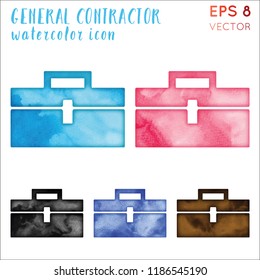A Relative Analysis Of Interior And Exterior Paint: Crucial Distinctions And Applications
A Relative Analysis Of Interior And Exterior Paint: Crucial Distinctions And Applications
Blog Article
Content Author-Ellis Henry
When you're choosing between exterior and interior paint, it's vital to recognize their essential differences that influence both efficiency and visual appeals. Interior paints are crafted for lower VOC levels and smoother coatings, making them optimal for indoor areas, while exterior paints are created to sustain harsh climate condition and UV exposure. Each type serves a distinctive function, however knowing when to utilize one over the other can substantially influence your job's end result. So, what house of color minnetonka should you consider when making your option?
Composition and Formulation
When choosing in between interior and exterior paint, understanding their make-up and solution is critical. Interior paints normally contain a lower quantity of unpredictable organic compounds (VOCs), making them much safer for interior air high quality. You'll observe they usually have a smoother finish, which boosts their ability to withstand spots and enables less complicated cleaning. They're developed to endure the rigors of interior atmospheres, including varying moisture levels and temperature fluctuations.
On the other hand, outside paints are developed to withstand harsher problems. They normally have greater degrees of pigments and ingredients to resist fading from UV rays, in addition to to stop mildew and mold development. Their composition includes extra binders and materials, which provide better adhesion to surfaces exposed to the components. This ensures the paint can endure rainfall, snow, and varying temperature levels without peeling off or splitting.
Efficiency and Sturdiness
Evaluating performance and durability is necessary when choosing between interior and exterior paint. Inside paint is created for surface areas that experience less deterioration. mouse click for source withstands fading and scuffing, making it ideal for living areas and rooms. Nonetheless, it may not hold up well in high-moisture locations like bathroom and kitchens without correct solution.
On the other hand, exterior paint encounters harsher problems. It's crafted to stand up to UV rays, rain, and temperature level variations. This sort of paint frequently consists of ingredients that protect against mold and mildew growth, making sure long life in various environments. When you use exterior paint, you can anticipate it to last a number of years longer than indoor paint, provided it's applied correctly.
An additional vital distinction depends on the finish alternatives. Inside paints frequently have straight line remodeling of surfaces for visual allure, while outside paints focus on longevity over sheen. If residential exterior painting seeking something that can handle the elements, exterior paint is your best bet.
On the other hand, if you're focused on interior appearances with less problem for severe conditions, interior paint may be ideal. Inevitably, your selection must line up with the specific needs of the environment.
Visual Considerations
A fresh coat of paint can change a room, but aesthetic considerations play a critical role in your option in between exterior and interior alternatives. When you're choosing paint, think of the state of mind you want to create. Interior paint permits you to explore a wider variety of colors and surfaces, allowing you to express your personal style and improve your home's ambiance. Whether you select soft pastels or strong hues, the right interior paint can make your areas really feel cozy, vibrant, or peaceful.
On the other hand, outside paint needs to straighten with your home's design and the surrounding environment. Below, you're not simply making a style statement; you're likewise considering visual charm. Selecting colors that harmonize with your area can improve your home's value and aesthetic charm. Keep in mind that outside paint is also based on fading and weather condition modifications, so picking a classic shade can conserve you from constant repainting.
Ultimately, think about just how each alternative fits your vision. By straightening your paint choice with your wanted aesthetic, you can create areas that reflect your personality while keeping functionality.
Final thought
When it comes to selecting paint, comprehending the crucial distinctions between interior and exterior alternatives is important. Interior paints concentrate on visual appeals and reduced VOCs, making them best for improving your interior spaces. In contrast, exterior paints are made for durability and weather condition resistance, safeguarding your home from the aspects. By considering your particular needs and the environment, you can confidently choose the appropriate paint to accomplish the appearance and longevity you want for your room.
